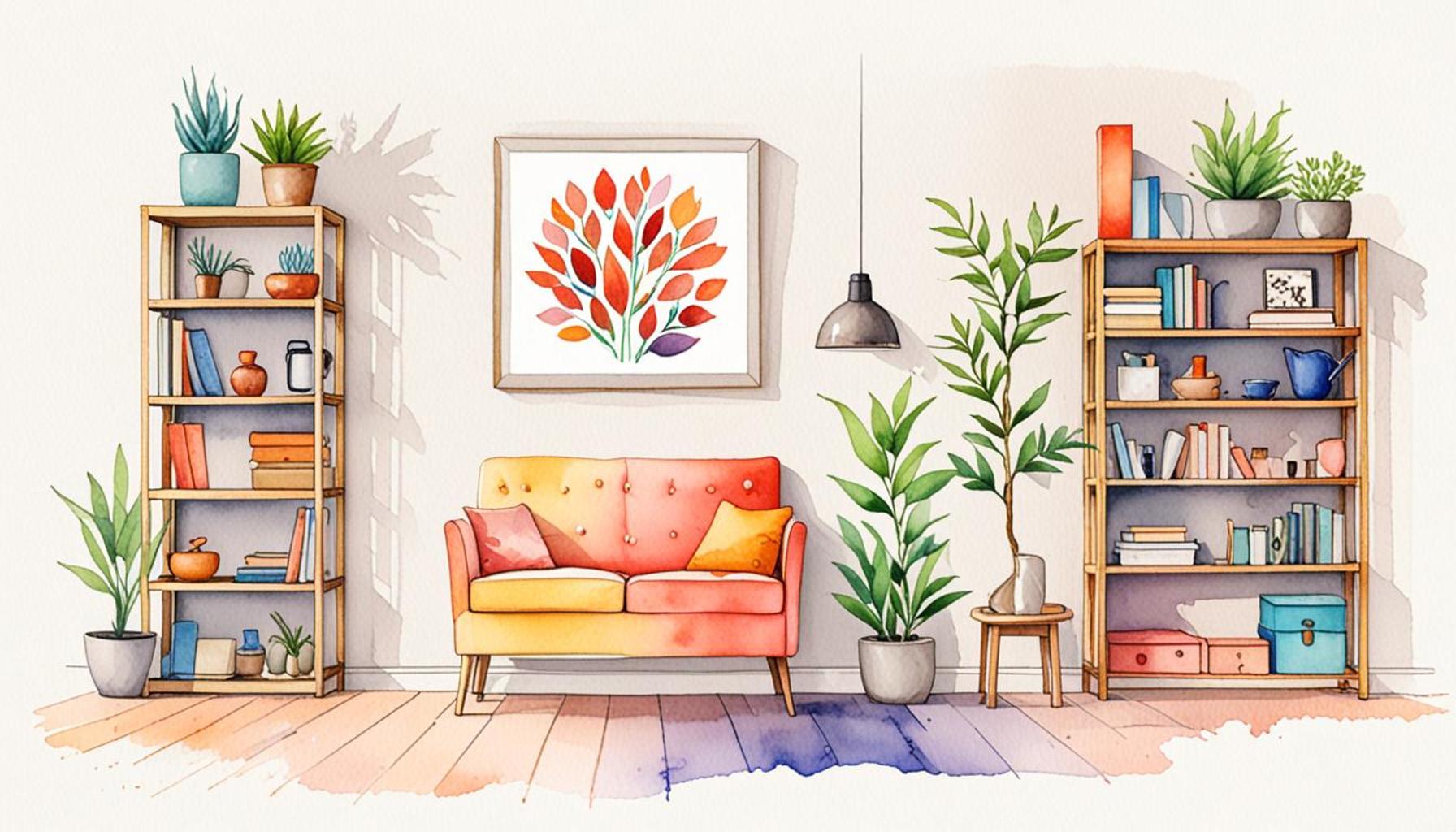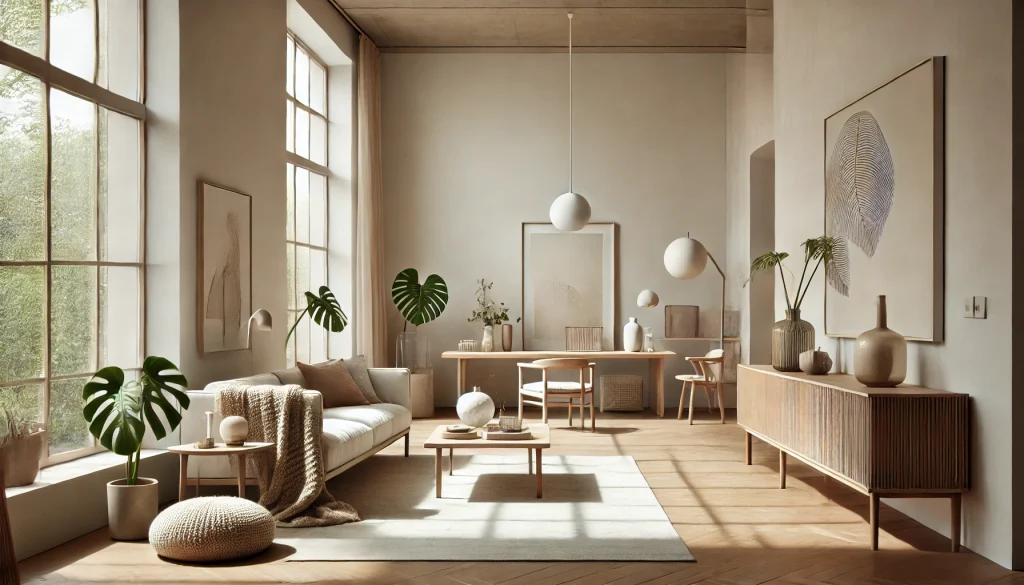The Importance of Intentional Design in Creating Minimalist Spaces: How to Organize Your Home with Purpose

The Power of Minimalism in Living Spaces
In recent years, the concept of minimalism has surged in popularity as people look for ways to simplify their lives amidst the chaos of modern existence. This design philosophy invites individuals to focus on what matters most, resulting in homes that exude clarity and tranquility. By embracing intentional design, not only can a space become more visually appealing, but it can also foster a profound sense of peace and mental well-being, a necessity in today’s fast-paced society.
This approach to home design asks us to be conscious of every single item we bring into our spaces, ensuring that each object serves a specific purpose or brings joy. Below are some essential aspects to consider when adopting an intentional design philosophy:
- Clarity: A thoughtfully designed space removes visual clutter and distractions, allowing for greater focus and mental clarity. Consider the enduring appeal of spaces with open layouts, which create a sense of flow and connection between areas, making environments feel larger and more inviting.
- Functionality: The mantra “less is more” takes center stage here. Every item in your home should earn its place, contributing positively to your daily life. For example, multifunctional furniture — like a sofa bed or a coffee table with storage — maximizes utility while minimizing clutter.
- Aesthetics: The beauty in minimalism lies in its simplicity. Imagine entering a serene living room with muted tones, natural light flooding in, and key decorative pieces that tell a story. This aesthetic not only inspires relaxation but also creates an environment where individuality can shine without overwhelming distractions.
Many households across the United States find themselves grappling with an overwhelming amount of clutter, which can negatively impact mental health. According to a study by the National Institute of Health, individuals living in cluttered environments often report higher levels of stress and anxiety. By focusing on how to organize your home intentionally, you can reclaim control over your living space, leading to improved emotional well-being.
Ultimately, creating minimalist spaces transcends the realm of mere decoration; it is a profound philosophy that emphasizes quality over quantity. As you navigate this journey into intentional design, you will uncover practical strategies for turning your home into a sanctuary that promotes purpose and simplicity. Whether it’s through strategic decluttering sessions or investing in fewer high-quality items, each step you take will move you closer to a balanced and harmonious living environment.
Curious about where to start? Keep reading to explore actionable tips and inspiring insights that can light the way to a minimalist lifestyle in your home. Discover how less truly can be more and transform your surroundings into a haven of peace.

CHECK THIS OUT: Click here to discover seasonal decluttering techniques
Strategies for Intentional Design in Minimalist Spaces
As you embark on the path to creating intentional and minimalist spaces, it’s important to understand that this journey is not merely about discarding items; it is about cultivating a thoughtfully curated environment. Intentional design grants your home a unique character by prioritizing functionality, comfort, and aesthetic appeal. Here are some essential strategies to consider when organizing your home with purpose:
- Assess Your Belongings: Start by evaluating everything you own. Ask yourself whether each item serves a clear function or evokes happiness. By doing this, you not only declutter your space but also establish a framework for what to retain. Items that do not meet these criteria can often be donated, recycled, or discarded.
- Create a Functional Zoning Plan: Divide your home into distinct zones based on activities (e.g., working, relaxing, cooking). By clearly defining these areas, you can tailor the furniture and decor to enhance the purpose of each space, reducing unnecessary clutter and confusion. For instance, a dedicated home office can boost productivity, while a well-designed reading nook invites relaxation.
- Adopt a Neutral Color Palette: Minimalist design often features a cohesive blend of neutral shades. This approach not only amplifies light and space but also creates a calming ambiance. Incorporate colors like whites, greys, beiges, and soft pastels to maintain harmony within your living areas, allowing for pops of color in carefully selected accessories.
- Incorporate Nature: Biophilic design emphasizes the connection between humans and nature. Integrating elements such as plants, natural light, and organic materials can greatly enhance your space. Adding greenery not only improves air quality but also introduces a touch of life into your minimalist design, reminding you of nature’s beauty.
- Embrace Multi-Functional Items: Invest in furniture that combines several uses, such as a storage ottoman or a dining table that can transform into a workspace. These versatile pieces are especially valuable in smaller homes, allowing for greater ease and efficiency in navigating your living area.
These strategies underscore the philosophy of intentional design, where every choice contributes to the greater vision of simplicity. Research from the American Psychological Association indicates that individuals who live in well-organized, minimal spaces report a greater sense of well-being and reduced stress levels. Therefore, as you reorganize your home, keep in mind that your environment plays a significant role in shaping your mental state.
Transitioning to a minimalist lifestyle is a powerful opportunity for personal growth. With a planned approach, you can create spaces that not only function more effectively but also reflect your identity and aspirations. By diligently applying these strategies, you work towards a home that embodies purpose and serenity, leading to a happier and more organized life.
The Concept of Intentional Design
Intentional design is a principle that emphasizes thoughtful decisions in creating spaces that align with our values and well-being. When applied to minimalist spaces, this concept encourages us to declutter our environments and reconsider the elements within them. By focusing on what truly matters, we can foster a sense of peace and functionality in our homes. A minimalist space isn’t merely about fewer items; it’s a reflection of our priorities. Every piece of furniture, decor, and organizational method should serve a clear purpose. This not only enhances aesthetic appeal but also improves the overall functionality of the area. For instance, multi-functional furniture — like a sofa bed or an ottoman with storage — exemplifies how intentional design can maximize utility in a minimalist space.Additionally, studies have shown that a clutter-free environment can significantly reduce stress and increase productivity. A well-organized home imparts a sense of control, making it easier to focus on tasks and enjoy relaxation. Intentional design allows us to curate our living space, ensuring that each item contributes positively to our daily experiences.
Practical Tips for Organizing with Purpose
To implement intentional design in your home, start by identifying areas that feel chaotic or overwhelming. Assess each item and ask yourself whether it adds value to your life. If not, consider parting ways with it. A practical strategy is to utilize the “one in, one out” rule: for every new item you bring into your home, remove one that you no longer need. This helps maintain a balanced and thoughtful environment.In addition, create designated spaces for items. Encouraging organization through clearly defined areas can significantly reduce clutter. Use baskets, bins, or attractive storage options to keep similar items together. This visually appealing method not only keeps your space tidy but also respects the intention behind each piece you choose to keep.Lastly, embrace natural light and simplicity in your design choices. Light-colored walls, open spaces, and minimal decorations can create an airy atmosphere. Incorporating natural elements, such as plants, can further enhance the peaceful vibe of a minimalist home, conveying a sense of tranquility.By focusing on intentional design and purposeful organization, you create a living environment that not only looks appealing but also supports your lifestyle and mental well-being.
| Advantages of Intentional Design | Description |
|---|---|
| Clarity & Focus | Encourages prioritization, promoting mental clarity and reducing distractions. |
| Enhanced Functionality | Creates spaces that cater to productivity, making daily tasks easier and more enjoyable. |
As you consider the principles of intentional design, remember that your home should reflect your values and support your lifestyle. Embrace simplicity, and your living space will become a sanctuary of peace and purpose.
DISCOVER MORE: Click here to dive deeper
Integrating Intentional Design Principles in Your Home
As the minimalist movement continues to gain traction, the significance of intentional design in transforming the home into a sanctuary cannot be overstated. By thoughtfully selecting your decor and arrangement, you can create spaces that not only feel serene but also resonate with your personal narrative. Here are additional principles that will guide you in fostering a purposeful home environment:
- Understand the Power of Lighting: Lighting plays a crucial role in setting the mood within your minimalist space. Utilize a mix of natural light and artificial sources to enhance the ambiance. Large windows can invite warmth and brightness during the day, whereas strategically placed soft lighting can create a cozy atmosphere during evening hours. Consider employing dimmers or smart lighting systems to adjust brightness according to your activities, enhancing both functionality and comfort.
- Prioritize Quality over Quantity: In a minimalist approach, every item should be chosen for its quality and longevity. Invest in a few well-crafted pieces rather than filling your space with low-quality items that may clutter and complicate. Brands like Muji and West Elm promote sustainable designs that are both aesthetically pleasing and functional, embodying the essence of intentional purchasing. This shift not only enhances your home’s aesthetics but also supports ethical consumerism.
- Personalize Your Space: Minimalism does not equate to a lack of personality. In fact, intentional design allows you to showcase what matters most. Curate a few cherished items or artwork that reflect your tastes, experiences, or heritage. This deliberate act of selecting personal pieces can turn a stark space into a reflection of your identity, effectively balancing minimalism with individuality.
- Implement Smart Storage Solutions: Storing items in an organized fashion is a critical aspect of maintaining a minimalist space. Look for hidden storage solutions like under-bed storage boxes, built-in shelving, or drawer organizers. These will prevent clutter from accumulating while keeping essential items easily accessible. For example, integrating an entryway bench with storage can provide a neat place for shoes and bags, streamlining daily routines.
- Regularly Reassess Your Space: Intentional design is an ongoing process. Schedule regular check-ins to evaluate your space and belongings. Ask yourself whether certain items are still adding value or have become insignificant. This habit not only keeps your home organized but also fosters a mindful engagement with what you bring into your life.
The shift towards intentional design in minimalist spaces offers remarkable benefits. A study by the National Institute of Health suggests that a simplified environment can enhance creativity and reduce distractions. As you adopt these principles, you’ll discover that each design choice empowers you to create a nurturing atmosphere. By purposefully curating your surroundings, your home evolves from mere shelter into a thoughtfully designated haven where peace and productivity thrive.
With steady dedication to these practices, the transformation of your living space can elevate your life, enabling you to achieve a harmonious blend of functionality and tranquility.
DIVE DEEPER: Click here to discover more
Conclusion: Embracing the Art of Intentional Design
In a world where excess often reigns, embracing intentional design within minimalist spaces can not only simplify your physical environment but also enrich your mental well-being. By understanding and integrating key principles such as lighting, quality over quantity, and personalization, you actively craft a home that resonates with your true self. Each design decision becomes a reflection of your values, guiding you towards a purposeful and peaceful sanctuary.
The journey towards a minimalist home involves a conscious commitment to reassessing your belongings and the impact they have on your life. This proactive engagement fosters a sense of clarity, allowing space for creativity and reducing distractions. As research from the National Institute of Health suggests, less clutter equates to a clearer mind, promoting both focus and productivity.
Ultimately, embracing intentional design in your home not only enhances aesthetics but also contributes to a healthier lifestyle, encouraging mindfulness in a fast-paced world. As you embark on this transformative journey, remember that the essence of minimalism is not merely in discarding items—it is in celebrating the value of each carefully chosen piece and finding joy in simplicity. With these insights and practices, your home can evolve from a mere living space to an expressive and serene haven tailored to your unique narrative.


